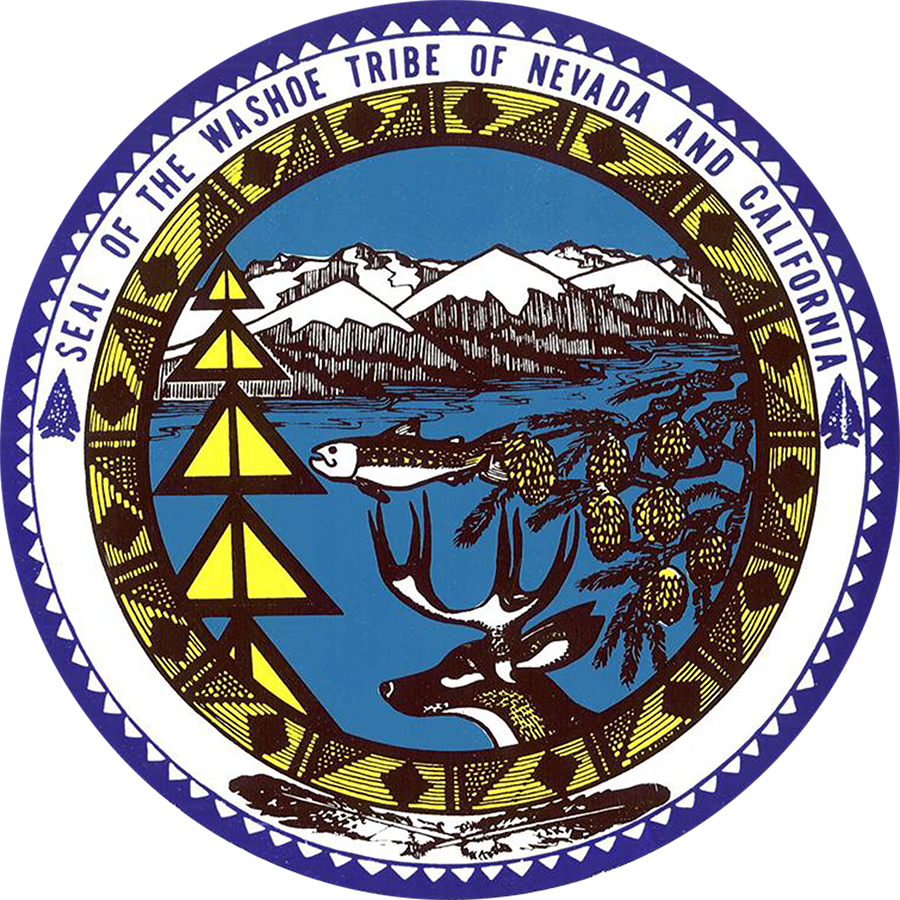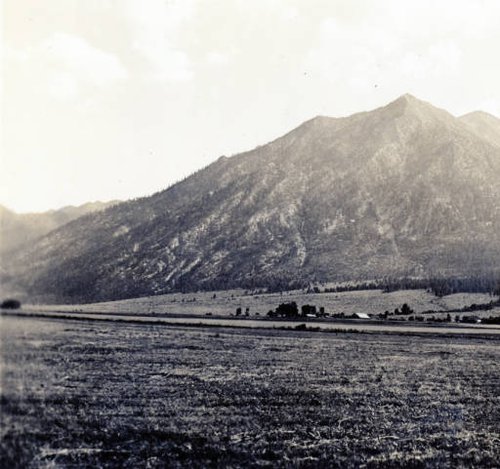
The Resilient Echoes of Da.Ɂaw: Inside the Washoe Tribe’s Fight for Cultural Preservation
LAKE TAHOE, NEVADA/CALIFORNIA – The sapphire waters of Lake Tahoe, shimmering under the Sierra Nevada sun, have long captivated the world with their pristine beauty. But for the Wašiw (Washoe) people, this place, which they call Da.Ɂaw, is more than just a scenic marvel; it is the very heart of their existence, the cradle of their culture, and the repository of generations of ancestral knowledge.
For thousands of years before European contact, the Washoe people thrived in the vast expanse of their traditional territory, stretching from Honey Lake in the north to Mono Lake in the south, and from the western slopes of the Sierra Nevada to the Pine Nut Mountains in the east. Their lives were intricately woven with the rhythms of the land, guided by seasons, sustained by hunting, fishing, and gathering, and enriched by a profound spiritual connection to every mountain, stream, and tree.

However, the arrival of settlers in the mid-19th century, spurred by the California Gold Rush and later the Comstock Lode, brought an era of devastating disruption. The Washoe, like countless other indigenous peoples, faced forced displacement, violence, disease, and the systematic dismantling of their way of life. Their lands were seized, their sacred sites desecrated, and their children forcibly sent to boarding schools designed to "kill the Indian to save the man," where speaking their native language and practicing their traditions were brutally suppressed.
"We lost so much in those generations," reflects a tribal elder, her voice soft but firm, requesting anonymity to speak freely about the painful past. "Our language, our ceremonies, our very understanding of who we were, was almost erased. It was a dark time, a time of silence."
Yet, despite the immense pressures, the Washoe spirit endured. Today, the Washoe Tribe of Nevada and California is engaged in a powerful and multifaceted struggle for cultural preservation, a determined effort to reclaim, revitalize, and transmit their heritage to future generations. This is not merely about preserving artifacts; it is about keeping a living culture vibrant, ensuring that the echoes of Da.Ɂaw continue to resonate through their people.
The Race Against Time: Revitalizing the Washo Language
Perhaps the most critical front in this battle for cultural survival is the revitalization of the Washo language, a linguistic isolate with no known relatives, making its preservation even more unique and urgent. For centuries, Washo was the primary vehicle for transmitting knowledge, history, humor, and spiritual understanding. But by the late 20th century, the number of fluent first-language speakers had dwindled to a handful, all elders.
"Our language holds the very soul of our people," says Herman Fillmore, the Cultural Resources Director for the Washoe Tribe, and a dedicated advocate for language revitalization. "Every word is a connection to our ancestors, to the land, to everything we are. Losing it would be like losing our memory, our identity."
Recognizing the dire situation, the Tribe has poured immense resources and passion into language programs. The Washo Language Program offers classes for all ages, from toddlers in immersion settings to adults seeking to reclaim their linguistic heritage. They employ innovative teaching methods, blending traditional oral instruction with modern technology. Digital dictionaries, language apps, and online resources are being developed to make learning accessible.
"It’s a race against time, but every new word learned by a child is a victory, a promise kept," says a young language instructor, herself a second-language learner who found profound meaning in her journey. "When they speak even a few phrases, you see their eyes light up. They feel strong, connected. It’s who they are." The challenge, however, remains significant, requiring consistent funding, dedicated teachers, and the sustained engagement of a community grappling with the demands of modern life.

Weaving Identity: Arts, Stories, and Traditional Knowledge
Beyond language, the Washoe are fiercely dedicated to preserving their traditional arts and practices, which serve as tangible links to their past and powerful expressions of their identity. Foremost among these is basket weaving, an art form for which the Washoe are renowned globally. Master weavers like Dat So La Lee (Louisa Keyser, c. 1829–1925) created monumental, intricately coiled baskets that are now priceless museum pieces, celebrated for their artistry and spiritual significance.
Today, new generations of Washoe weavers are learning from elders, continuing this sacred tradition. "When I weave, I feel the hands of my grandmothers guiding me," explains a contemporary Washoe weaver, her fingers deftly manipulating willow and redbud. "It’s more than art; it’s prayer, it’s history, it’s medicine. It connects me to every woman who sat here before me, creating beauty and utility from the land."
Storytelling also plays a vital role. Oral traditions, myths, and historical narratives are being carefully documented and shared, often through community gatherings and youth camps. These stories teach moral lessons, explain natural phenomena, and transmit the tribe’s history from their own perspective, countering centuries of misrepresentation.
Furthermore, the Washoe are revitalizing their Traditional Ecological Knowledge (TEK). This encompasses a deep understanding of the land, its flora and fauna, sustainable harvesting practices, and the intricate balance of ecosystems. With climate change impacting the Sierra Nevada and Lake Tahoe, this knowledge is proving invaluable. The Tribe is increasingly involved in co-management efforts with federal and state agencies, offering their ancestral wisdom on issues like forest health, water quality, and fire management. Their approach to land stewardship, rooted in thousands of years of observation and respect, offers critical insights for contemporary environmental challenges.
Guardians of Da.Ɂaw: Land, Water, and Sovereignty
The spiritual and cultural connection to Da.Ɂaw (Lake Tahoe) remains paramount. For the Washoe, the lake is not merely a resource but a living entity, a sacred ancestor. Protecting it from pollution and overdevelopment is a core tenet of their cultural preservation efforts. The Tribe actively participates in environmental monitoring, advocacy, and educational initiatives focused on the Tahoe basin. Their voice is a powerful one in the ongoing debates about the lake’s future.
"We are the original stewards of this land and water," states a tribal council member, emphasizing the inherent responsibility. "Our ancestors have cared for Da.Ɂaw since time immemorial. It is our duty to continue that care, not just for our people, but for everyone who benefits from its beauty and purity."
Sovereignty, the inherent right to self-governance, is fundamental to the Washoe’s ability to preserve their culture. It allows them to determine their own educational curricula, establish their own cultural institutions, and make decisions about their heritage without external interference. This self-determination is crucial for the success and authenticity of all their preservation initiatives.
Cultivating the Future: Engaging the Next Generation
Ultimately, the success of Washoe cultural preservation rests on the shoulders of the next generation. The Tribe runs various youth programs designed to instill pride, knowledge, and connection. Summer camps focus on traditional skills like fishing, gathering, basketry, and storytelling. Mentorship programs pair elders with youth, fostering intergenerational knowledge transfer.
"Learning Washo makes me feel strong, connected," says a teenager participating in a language immersion camp, her eyes bright with enthusiasm. "It’s not just words; it’s understanding where I come from, understanding my family, understanding the land."
The Tribe also leverages modern tools to engage younger members. Social media campaigns, online cultural content, and digital storytelling projects are used to reach youth where they are, making cultural learning relevant and exciting in the 21st century. The goal is to create a sense of belonging and cultural identity that can withstand the pressures of assimilation and globalization.
The Unfolding Tapestry of Resilience
The Washoe Tribe’s journey of cultural preservation is an ongoing testament to their resilience. It is a daily act of defiance against historical erasure and a powerful affirmation of their identity. While challenges persist—from securing consistent funding for programs to overcoming the lingering effects of historical trauma—the commitment of the Washoe people remains unwavering.
Their efforts are not just about safeguarding a unique heritage; they offer profound lessons for the broader world. The Washoe teach us about the intrinsic value of language as a carrier of worldview, the importance of living in harmony with the environment, and the enduring strength of community in the face of adversity.
As the sun sets over Da.Ɂaw, casting long shadows across the ancient lands, the Washoe people continue their vital work. Their songs, stories, and the growing voices of young language learners are a vibrant echo, ensuring that the spirit of their ancestors, and the heart of their culture, will beat strongly for generations to come. The tapestry of Washoe culture, though frayed by history, is being meticulously rewoven, thread by resilient thread, by the very people who call this sacred land home.


